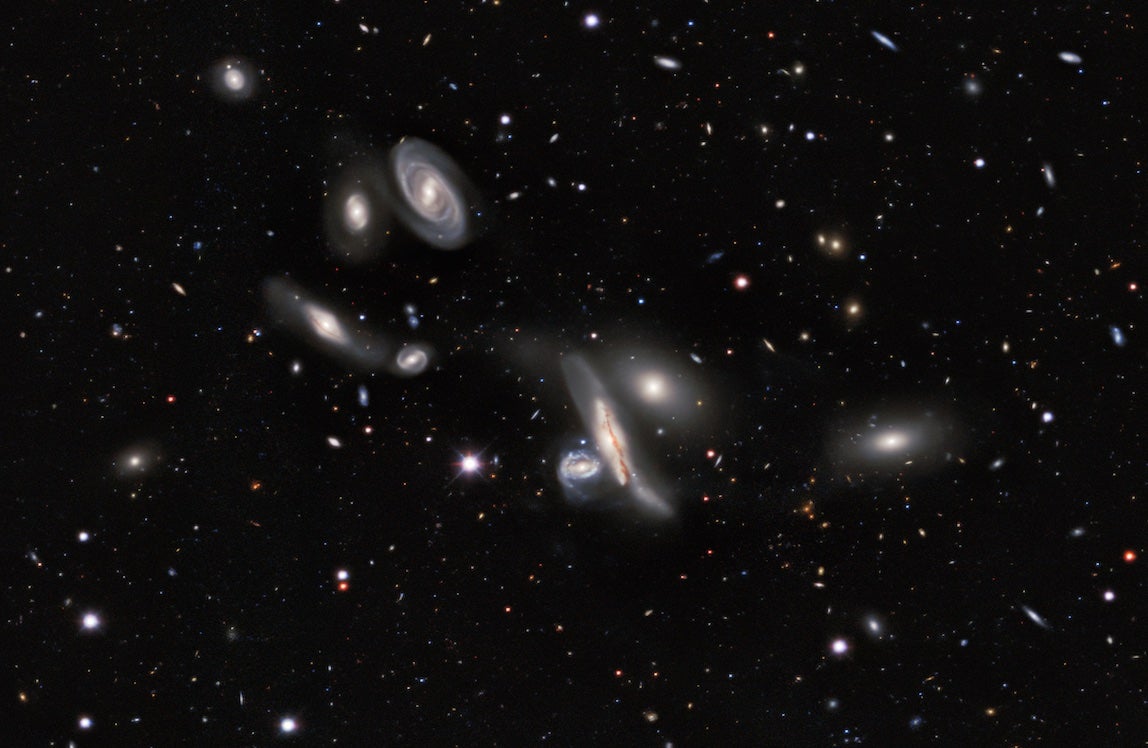
Credit score rating: DESI Legacy Imaging Surveys/LBNL/DOE & KPNO/CTIO/NOIRLab/NSF/AURA
In 1874, Scottish astronomer Ralph Copeland was an assistant to William Parsons, Earl of Rosse. In April, whereas scanning the constellation Leo with Parsons’ 72-inch speculum-mirror reflector — the Leviathan of Parsonstown — Copeland was the first to determine this compact galaxy group. When he wrote an overview for the New Regular Catalogue, he described 5 of the galaxies as “pretty sensible.” Correctly, he was using a 72-inch scope. And although you don’t need such an optical behemoth to view these objects, you may want a minimal of a 14-inch instrument, good seeing (atmospheric stability), and a darkish web site.
Usually often known as Hickson 57, this group lies 5.7° east-northeast of magnitude 2.6 Zosma (Delta [δ] Leonis). It spans an area 5′ by 2′. The seven galaxies that make up the Septet are magnitude 15.2 NGC 3745, magnitude 14.0 NGC 3746, magnitude 14.8 NGC 3748, magnitude 15.0 NGC 3750, magnitude 15.0 NGC 3751, magnitude 14.5 NGC 3753, and magnitude 14.3 NGC 3754. Discover that the magnitudes for these galaxies vary significantly counting on the provision you reference.
One key to effectively observing Copeland’s Septet is persistence, notably by the use of telescopes smaller than 18 inches in aperture. Recognizing all seven can take a while, nevertheless determining them is easy for individuals who’ve first printed out a finder chart. One different secret is letting the group climb to its highest degree inside the sky. A third is decided by your web site’s seeing. If the celebrities overhead are twinkling, switch on to your subsequent purpose and take a look at for the Septet one different night time time.
